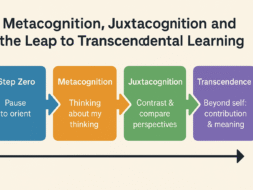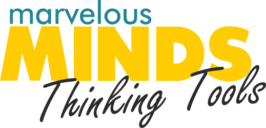Unveiling the Hidden Layers of Mathematics: How Invisible Skills Manifest as Visible Skills
Introduction
Mathematics often presents itself as a subject of precision and clarity, where answers are either right or wrong. Yet, behind every correct calculation or neatly drawn graph lies a world of invisible skills that form the foundation of visible outcomes. These skills are rooted in the brain's intricate processes, where various regions work together to process invisible reasoning and translate it into visible performance. Understanding how these invisible skills manifest as visible abilities is key to fostering true mathematical mastery.
What Are Invisible Math Skills?
Invisible skills are the unseen cognitive processes and mental frameworks that enable students to engage with and understand mathematical concepts. These include:
- Logical Reasoning: The ability to follow and construct logical arguments.
- Pattern Recognition: Identifying trends and relationships in data.
- Conceptual Understanding: Grasping the 'why' behind mathematical rules.
- Strategic Thinking: Planning and deciding how to approach a problem.
These skills often go unnoticed because they don’t have immediate, tangible outputs, yet they are the engine driving visible performance.
How Invisible Skills Manifest as Visible Skills
Invisible skills become visible through actions, achievements, and outputs:
- Logical Reasoning → Problem-Solving: A student who understands the logical steps of an argument can construct and solve equations methodically.
- Pattern Recognition → Efficient Calculations: Recognizing patterns allows students to simplify problems, such as factoring polynomials or predicting number sequences.
- Conceptual Understanding → Flexibility: Students who deeply understand a concept can apply it across contexts, such as using proportional reasoning in geometry and physics.
- Strategic Thinking → Exam Success: Choosing the most efficient method to solve a problem reflects strong metacognitive awareness.
The visible and invisible aspects of mathematical skills emerge from the interplay of multiple interconnected regions.
Invisible Skills (Cognitive and Metacognitive Processes)
- Prefrontal Cortex: Responsible for logical reasoning, strategic thinking, and decision-making. This area is crucial for abstract thought and planning.
- Parietal Lobe: Engages in spatial reasoning and understanding mathematical concepts.
- Hippocampus: Plays a role in memory formation and the integration of new knowledge with existing understanding.
- Default Mode Network: Involved in introspection and higher-order thinking, supporting problem-solving when we reflect or visualize solutions.
Visible Skills (Execution and Application)
- Motor Cortex: If physical action is involved (e.g., writing solutions or drawing graphs).
- Parietal Lobe: Used again here for calculations, applying learned formulas, and visualizing geometric problems.
- Temporal Lobe: Processes language-related aspects of mathematics, like word problems.
- Cerebellum: Contributes to procedural skills and automating repetitive calculations or steps.
The Interplay
These regions don't work in isolation. For instance:
- Logical reasoning (invisible) in the prefrontal cortex is necessary to apply a formula (visible) processed in the parietal lobe.
- Pattern recognition (invisible) integrates inputs from visual and memory-related areas to create a graph (visible).
This dynamic interconnectivity illustrates that while we categorize skills as "visible" or "invisible," the brain operates as a unified system to bring them to life.
The Role of Teachers in Developing Invisible Skills
Educators play a pivotal role in nurturing these invisible skills, ensuring they translate into visible success:
- Formative Assessments: By evaluating the thinking process, teachers can identify invisible skill gaps and guide students.
- Scaffolded Learning: Using tools like tree maps to organize surface thinking before diving deeper into conceptual understanding.
- Real-World Applications: Assigning tasks that require students to apply both visible and invisible skills, such as designing a budget or analyzing data trends.
Strategies for Making Invisible Skills Visible
- Comparison and Contrast: Encourage students to use double bubble maps to compare problem-solving strategies, making invisible reasoning explicit.
- Think-Alouds or what we call in Thinking Tools language #innerspeec: Have students verbalize their thought processes during problem-solving to highlight the invisible steps.
- Interactive Activities: Use games and challenges that require logical reasoning and pattern recognition, making these skills observable.
Conclusion
Invisible skills are the silent architects of visible mathematical success. By focusing on how these skills develop and manifest, educators can create a more holistic approach to teaching mathematics—one that prepares students not just to perform, but to understand and innovate.
Call to Action
Whether you're a teacher planning your next lesson or a student tackling a challenging problem, take a moment to reflect on the thought processes and strategies that lead to success. Share your experiences, collaborate with others, and explore innovative approaches to bring out the best in every mathematical journey. Together, we can make the invisible visible.





